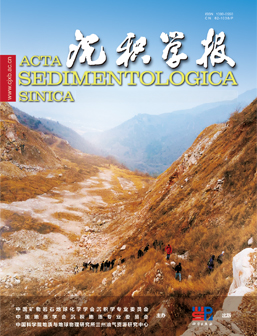The Cryogenian Sediments and Zircon U-Pb Age in Hanzhong Area, North Margin of the Yangtze Block
doi: 10.14027/j.issn.1000-0550.2025.013
- Received Date: 2025-01-27
- Available Online: 2025-08-20
-
Key words:
- North margin of the Yangtze Block /
- “Nantuo Formation” /
- Glacial sediments /
- Sturtian glaciation /
- Zircon U-Pb dating
Abstract: [Objective] In the Yangtze Block, South China, many places have been found with well preserved sedimentary records of Neoproterozoic “Snowball Earth” (Cryogenian), including the sediments from Sturtian glaciation (ca. 720 ~ 660 Ma, equivalent to Chang'an glaciation and Gucheng glaciation, Nanhuan Period), nonglacial interlude (ca. 660 ~ 649 Ma, Datangpo Age ), and Marinoan glaciation (ca. 649 ~ 635 Ma, Nantuo glaciation). The Neoproterozoic glacial deposits in Gangchang-Yuanba section, Hanzhong area, north margin of the Yangtze Block, previously called “Nantuo tillite”, were formed above the Tonian Liantuo red coarse clastic rocks, and below the Ediacaran Dushanshituo dolomite. In order to clarify the tillite age, how they formed and filled in the small rift basin between the north margin of Yangtze Block and the south margin of Qinling Orogens. [Methods]The field observation and measurement were carried out in the section. Based on it, zircons selected from the bottom tuff layer and upper sandstones were conducted U-Pb dating analysis (LA-ICP-MS).The detailed features of the sedimentary rocks and their regional correlation were also discussed in this paper. [Results and Discussion] Two sets of tillites were first identified within the Neoproterozoic glacial sedimentary rocks in this region, and both were formed from continental glacier. Several layers of sandstones and siltstones were filled between them and above. Zircons from the bottom tuff yield a youngest mean concordant age of 719 ± 11Ma, indicating the beginning of glaciation in this area. Considering with the lithological succession and sedimentary structures, these Cryogenian deposits are thought to be formed in the Sturtian glaciation, corresponding respectively to the Chang'an glaciation and the Gucheng glaciation. The timing of this glaciation event and the sedimentary associations are not only consistent with the contemporaneous sediments in adjacent Zhenba and Chengkou areas, but also show similarities to the Sturtian sediments widely distributed in other parts of South China.
| Citation: | The Cryogenian Sediments and Zircon U-Pb Age in Hanzhong Area, North Margin of the Yangtze Block[J]. Acta Sedimentologica Sinica. doi: 10.14027/j.issn.1000-0550.2025.013 |






 DownLoad:
DownLoad: